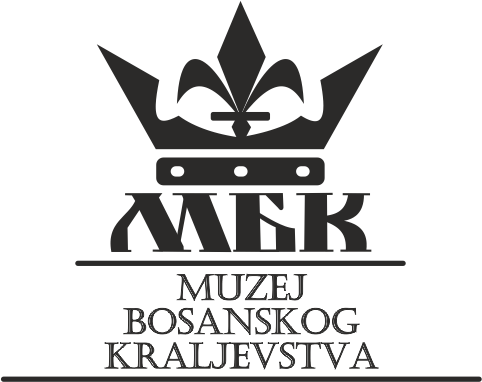Pavle Hrvatnić (? – 1345 at the earliest) was the son of Prince Hrvatin Stjepanić and the brother of Vukoslav and Vukac Hrvatnić. Pavle was the first son of Prince Hrvatin to recognize the supreme authority of Ban Stjepan II Kotromanić. There is no record of when the Bosnian ban was recognized as the supreme lord since no charter was preserved, as was the case with his older brother Vukolslav. However, Bosnian rule on his territory can be traced back to 1323, when it first appeared in historical sources. Namely, that year Berislav Skočić issued a charter where it is explicitly stated that Prince Pavle Hrvatinić, before whom the charter was issued, is the Lord of Zemljanik county and a subject of Ban Stjepan. It is evident that Ban Stjepan II Kotromanić did not recognize Prince Pavle, as well as later his brothers, the title of “Prince of Donji Kraji of Bosnia”, which was held by their father and which was recognized by the Princes of Bribir, but established a separate vassal relationship with each of his sons which resulted in the splitting of the family as previously happened with Šubić and Babonić families. It was a very deliberate move that was supposed to prevent the excessive strengthening of the family to the detriment of the central authorities. However, the granting of a large number of benefits to its vassals on the donated possessions made the rule of the bans over the Donji Kraji impossible without the loyalty of the Hrvatinić family. From the aforementioned charter, we also learn that Prince Pavle had his official court secretary Tolislav and the scribe Ivaniš Ivanović. Nevertheless, it remains unclear under what circumstances Zemljanik county came under his rule, as it had previously been ruled by Babonići.
He is cited as a witness in the charter issued by Ban Stjepan II Kotromanić to the Ragusans on August 15, 1332, which dictated the procedures for resolving disputes between his subjects and the Ragusans. In this charter, the only known mention of Završje has been preserved so far, which was a special judicial area that included the traditional Bosnian lands of Usora and Soli and the counties of Zemljanik and Trebotić. Usually, by reading the aforementioned charter, it was concluded that it was Pavle Hrvatinić who was one of the witnesses and representatives of Završje, though such a conclusion was challenged by claims that part of the charter had been mistakenly omitted during transcription. And while Prince Pavle’s connection with Završje is debatable, his authority over the town of Glamoč can be reliably stated. Namely, on November 25, 1341, Radoj Butković and Vuk Gendilović from Glamoč, the people of Pavle and Vukoslav Hrvatinić, concluded a contract with a Venetian merchant living in Trogir. It seems that there was a dual power over Glamoč since the Katarina’s man, the sister of Stjepan II Kotromanić, was also mentioned. In addition, Prince Pavle came into possession of Greben, which was later ceded to the Hungarian king by his descendants.
The exact year of Prince Pavle Hrvatinić’s death is not known. In historical sources, he is mentioned for the last time in the charter that Ban Stjepan II Kotromanić, as a representative of the Hungarian king Ludovic I of Anjou, issued to Ivan Nelipčić, Prince of Knin, on June 23, 1345. It was a matter of confirming the agreement reached between the Bosnian Ban and the Prince of Knin together with his mother, Vladislava Kurjaković. Here Prince Pavle is listed with other nobles as a witness. He left behind two sons, Grgur and Vladislav Pavlović, most famous for their betrayal of the young Ban Tvrtko in 1357, when they placed themselves under the rule of the Hungarian king and ceded Greben to him.
Bibliography:
- Ančić, Mladen: Putanja klatna; Ugarsko-hrvatsko kraljevstvo i Bosna u XIV stoljeću, Zavod za povijesne znanosti HAZU u Zadru – Ziral, Zadar-Mostar, 1997.
- Blagojević, Miloš: “Bosansko završje”, Zbornik Filozofskog fakulteta 14, Beograd, 1979, 129-144.
- Ćirković, Sima: “Ostaci starije društvene strukture u bosanskom feudalnom društvu”, Istorijski glasnik 3-4, Beograd, 1958, 155-164.
- Ćošković, Pejo: “Hrvatinići (Horvatići, Stipančić Hrvatinić, Stipanići, Stjepanići), (velikaški rod)” in: Hrvatski biografski leksikon, V (Gn-H), Leksikografski zavod Miroslav Krleža, Zagreb, 2002, 725-739.
- Isailović, Neven: “Povelja bana Stjepana II Kotromanića knezu Ivanu Nelipčiću”, Građa o prošlosti Bosne 12, Banja Luka, 2019, 9-39.
- Klaić, Nada: Srednjovjekovna Bosna. Politički položaj bosanskih vladara do Tvrtkove krunidbe (1377.g.), Eminex, Zagreb, 1994.
- Miklosich, Franz: Monumenta serbica historiam Serbiae Bosnae Ragusii, Apud Guilelmum Braumüller, Wiennae, 1858.
- Mrgić-Radojčić, Jelena: Donji Kraji. Krajina srednjovekovne Bosne, Filozofski fakultet u Beogradu-Filozofski fakultet u Banjaluci-Istorijski institut u Banjaluci, Beograd-Banja Luka, 2002.
- Perojević, Marko: “Stjepan II Kotromanić” in: Povijest Bosne i Hercegovine; od najstarijih vremena do godine 1463., HKD Napredak, Sarajevo, 1998, 250-285.
- Stojanović, Ljubomir: Stare srpske povelje i pisma, I (1), SKA, Beograd-Sremski Karlovci, 1929.
- Sulejmanagić, Amer: “Novac Hrvoja Vukčića Hrvatinića”, Numizmatičke Vijesti 54/65, Zagreb, 2012, 54-85.
- Šišić, Ferdo: Vojvoda Hrvoje Vukčić Hrvatinić i njegovo doba, MH, Zagreb, 1902.
- Thallόczy, Ljudevit: “Istraživanje o postanku bosanske banovine sa naročitim obzirom na povelje kӧrmendskog arkiva”, Glasnik Zemaljskog muzeja 18, Sarajevo, 1906, 401-444.
- Thallóczy, Ludwig von: Studien zur geschichte Bosniens und Serbiens in mittelalter, Duncker&Humblot, München-Leipzig, 1914.
The Hungarian National Archives in Budapest (Magyar Nemzeti Levéltár Országos Levéltára) in the so-called Pre-Mohács collection (Mohács Előtti Gyűjtemény) signature Diplomatikai Levéltár (DL) 87181.
Source of signature: Isailović, Neven: “Povelja bana Stjepana II Kotromanića knezu Ivanu Nelipčiću”, Građa o prošlosti Bosne 12, Banja Luka, 2019, p. 12
